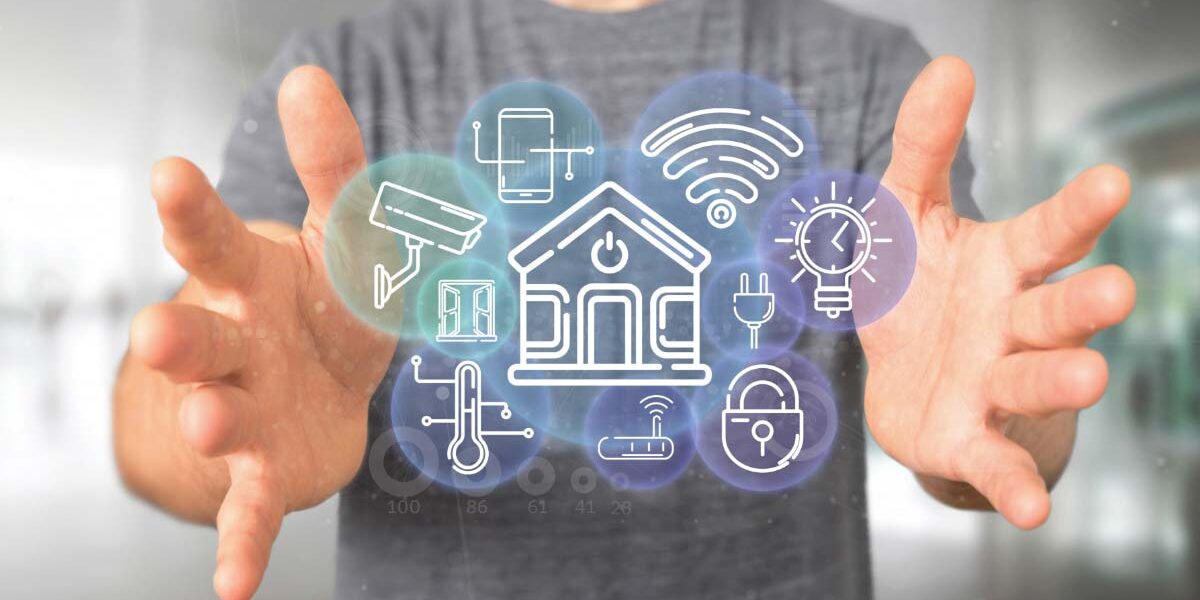While you walk back in to take your laptop, you see an unplanned package – delivered at your doorstep by drone. It includes medicine you didn’t also know you required. Earlier, health sensors in your bathroom identified a continuing illness and automatically set the plan for you.
Does this sound like something from a science fiction film? It does now, but in ten years, it may be a reality. In fact, research suggests that by 2022, 63 million American homes will be “smart.” In a decade, though, the Home Automation will adapt and “learn” about their occupants, anticipating their needs. Robotics advancements will allow machines to assist with cooking, cleaning, and other tasks.
The data that smart homes collect, analyze, and employ will convert future homes from a random collection of gadgets to “smart” homes at the core of it all. Smart homes are soon becoming the new standard, with everything from home security systems to voice assistants.
Looking Forward: A Connected Future
By 2021, consumers will spend $123 billion on Internet of Things (IoT) equipment. Home Automation technology will be fueled by various technological advancements that will go much beyond what is currently accessible on store shelves.
By 2023, the home-monitoring and security gadgets sector will be worth $22 billion, accounting for 22% of the smart-home market. Smart speakers and lighting equipment come in second and third, with 15% and 12%, respectively. Currently, there are around seven billion connected IoT devices, but this figure is expected to skyrocket in the next years. While it becomes more comfortable to use smart-home technology and the benefits become clearer, sustained growth will remain.
Here’s a look at what may become popular innovations in the homes of the future:
Mobile Robot Security Guards

The closest we have to security-oriented robots right now are stationary smart sensors and cameras that identify suspicious motion. But, in the not-too-distant future, so-called smart robots will be able to monitor your entire home. Through ballot technology, the robots’ built-in cameras and sensors will monitor the home in real-time for suspicious activities. They will also detect thieves and small variations in the air, such as allergens, cooking on the stove, and possibly deadly fumes. If anything contrary is discovered, these smart robots can tell their homeowners via an app.
Creating the Ideal Routine
Do you have favorite music that you listen to first thing in the morning? Do you want to unwind for bed around 9:30 p.m. with dim lighting and soothing nature sounds? Smart homes can adapt to your daily routine by learning your preferences and playing a specific song or altering the lighting in your bedroom at night. Your home may get so familiar with your routine that you won’t have to tell it what to do. It’s one thing to play your favorite tune. But what if your smart home could turn off the cook top burner you left on earlier because it recognizes you aren’t home at that time? This would not only prevent you from burning your home, but it would also save you money on energy.
Personal Chef
In your own home, so-called “kitchen manipulators” can act as sous chefs. Not only can this smart robot monitor dirty dishes and identify materials, but it can also open and close drawers and prepare meals for you. Think again if you think you can sneak downstairs at midnight to get that last piece of the pie. Even the refrigerator door can be locked by your robot chef.
Life-Saving Toilets
High-tech thrones with soothing music and warming seats have been around for a while. Future toilets, on the other hand, will examine urine for irregularities in color, volume, consistency, and frequency. The data will then be used by your toilet to detect any health issues, including protein and blood deficiencies.
It may seem unwanted to you now, but this technology could potentially save your life.
Concluding Lines
Home Automation technology is rapidly advancing. It’s difficult to see today’s super-connected homes becoming obsolete in the future. However, with the current rate of advancement, 2021 may feel like “the ancient days” before we can blink.
Technology has advanced in leaps and bounds, providing more than we could ever imagine, from smart toilets to energy-efficient cars. As a result, it’s not difficult to picture a home powered by smart devices and appliances. We have already accepted a life that is heavily reliant on technology, with AI making headlines every other day and automated systems like Alexa.



